Complete Solutions to Exercise 6.4 of chapter NEWTON'S LAWS OF MOTION 1 of Class 11 book with complete answers and questions
| Class 11 | PHYSICS |
| Chapter | NEWTON'S LAWS OF MOTION 1 |
| CENGAGE PHYSICS | Exercise 6.4 |
| Number Of Questions | 13 |
| Academic Year | 2023-24 |
(a) A 10-kg block is supported by cord that runs to a spring scale, which is supported by another cord from the ceiling as shown in fig. What is the reading on the scale?
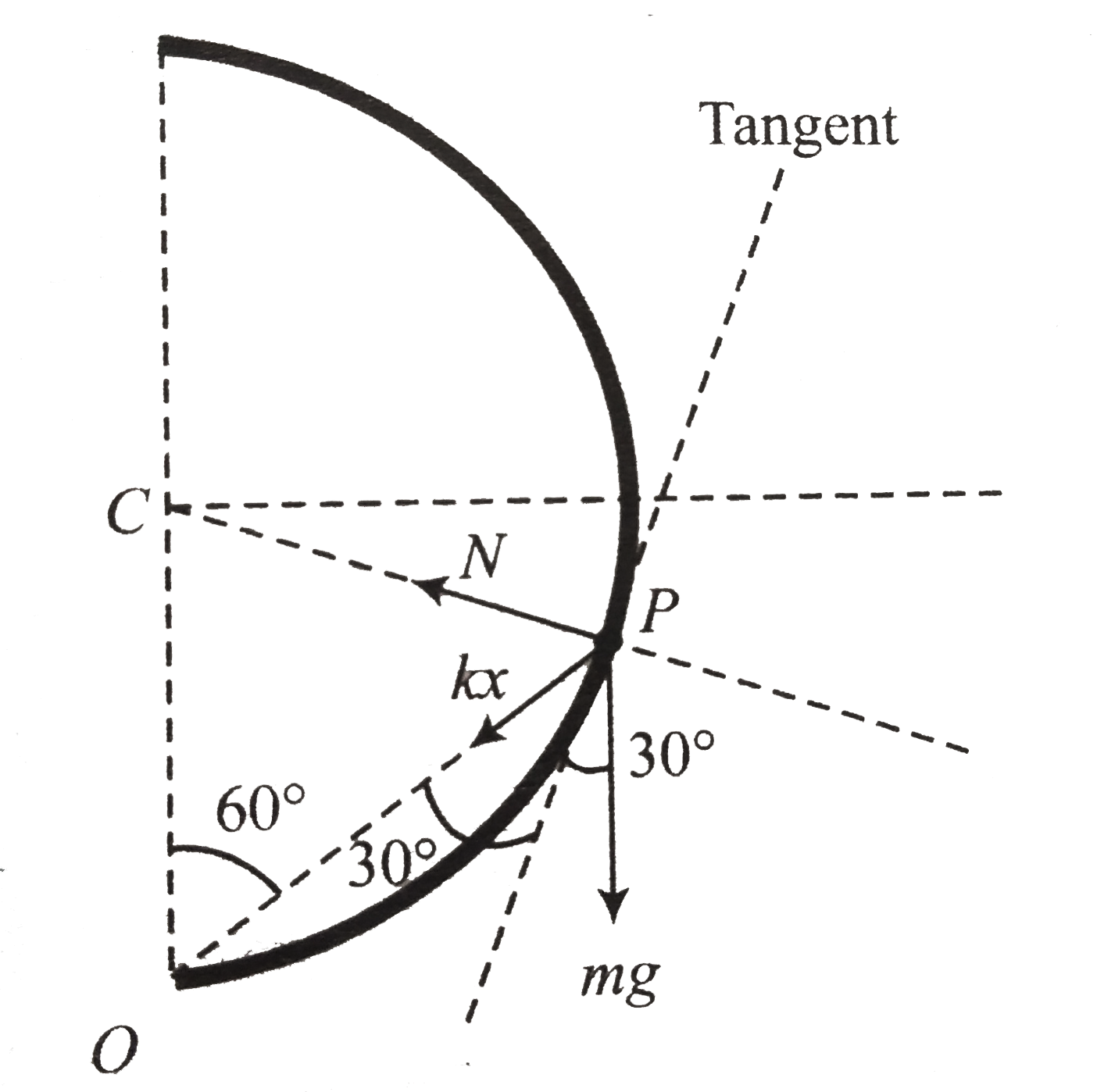
(b) In Fig. the block is supported by a cord that runs around a pulley and to a scale. The opposite end of the scale is attached by a cord to a wall. What is the reading of the scale?
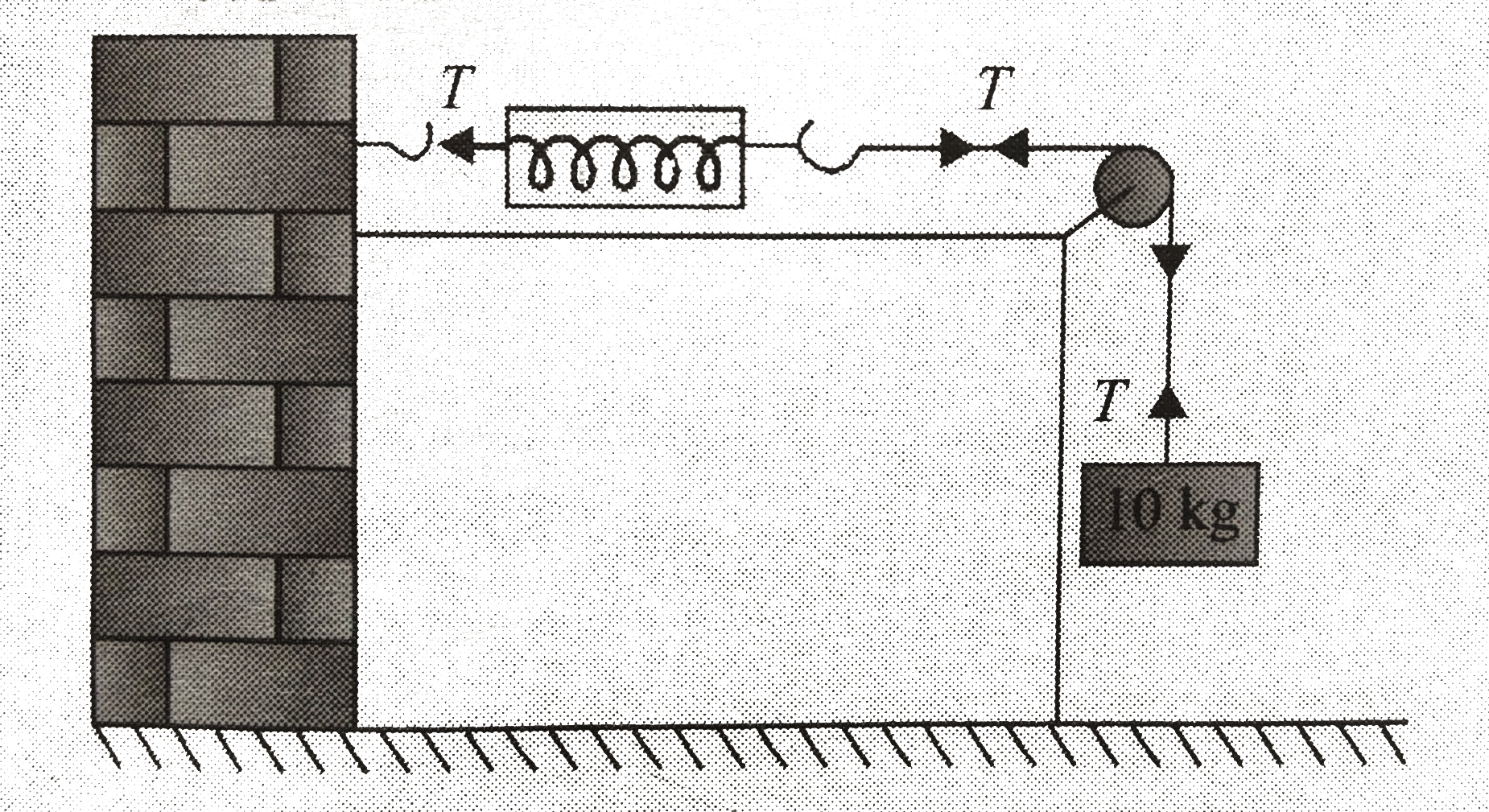
(c ) In fig. the wall has been replaced with a second 10-kg block, what is the reading on the scale now?
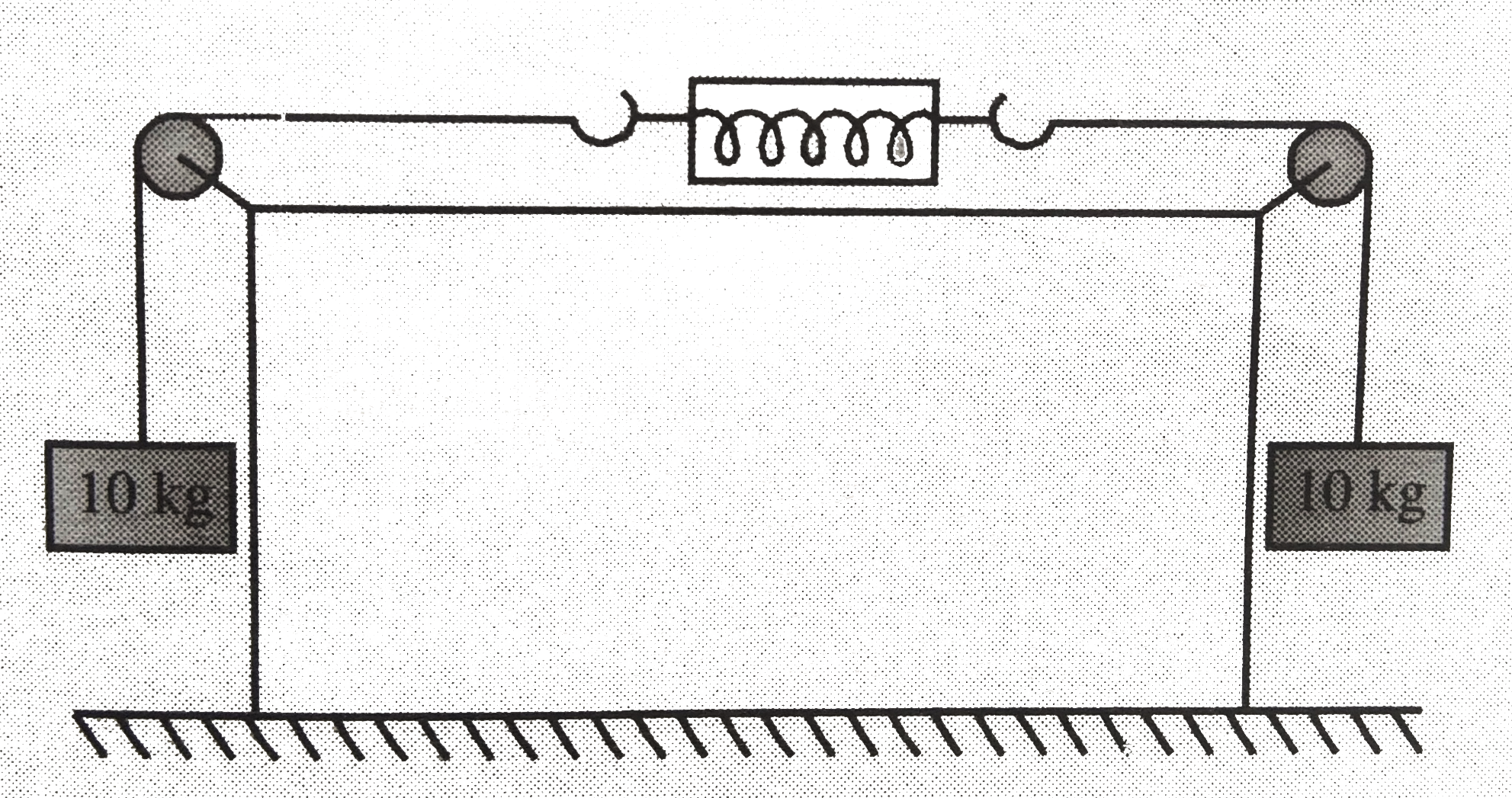 .01:53View Solution
.01:53View SolutionWhat is the reading of the spring balance in the following device?
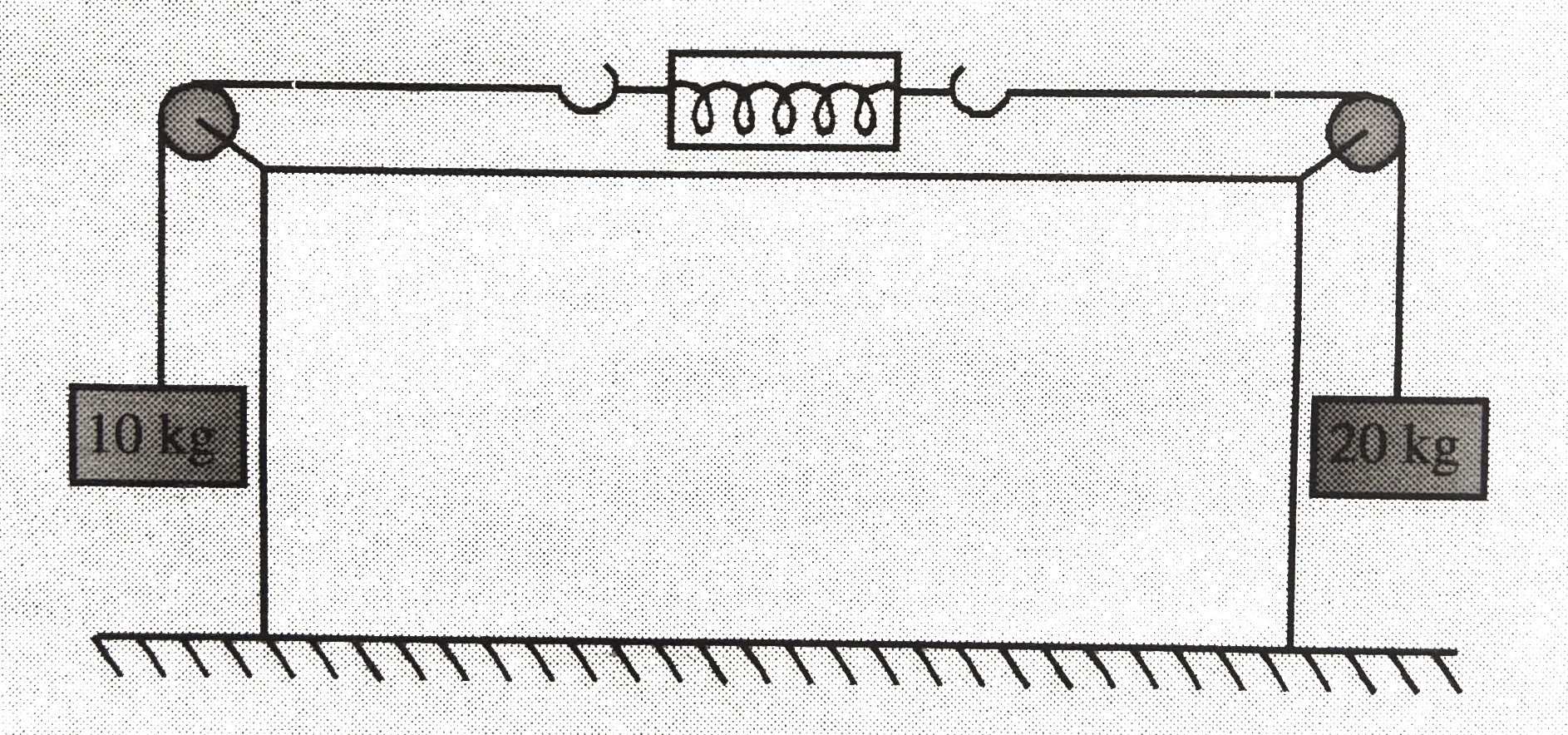 05:04View Solution
05:04View SolutionIn Fig. three identical massless springs are kept horizontal. The left end of the first is tied to a wall. The left end of the second spring is tied to a block of mass m placed on rough ground and the ,eft end of the third spring is tied to a block of mass m placed frictionless ground. The right end of each spring is pulled by a force that is increased gradually from zero to F. Extensions in these springs are `x_(1)`, `x_(2)` and `x_(3)`, respectively. Find the relationship between `x_(1)`, `x_(2)`, and `x_(3)`
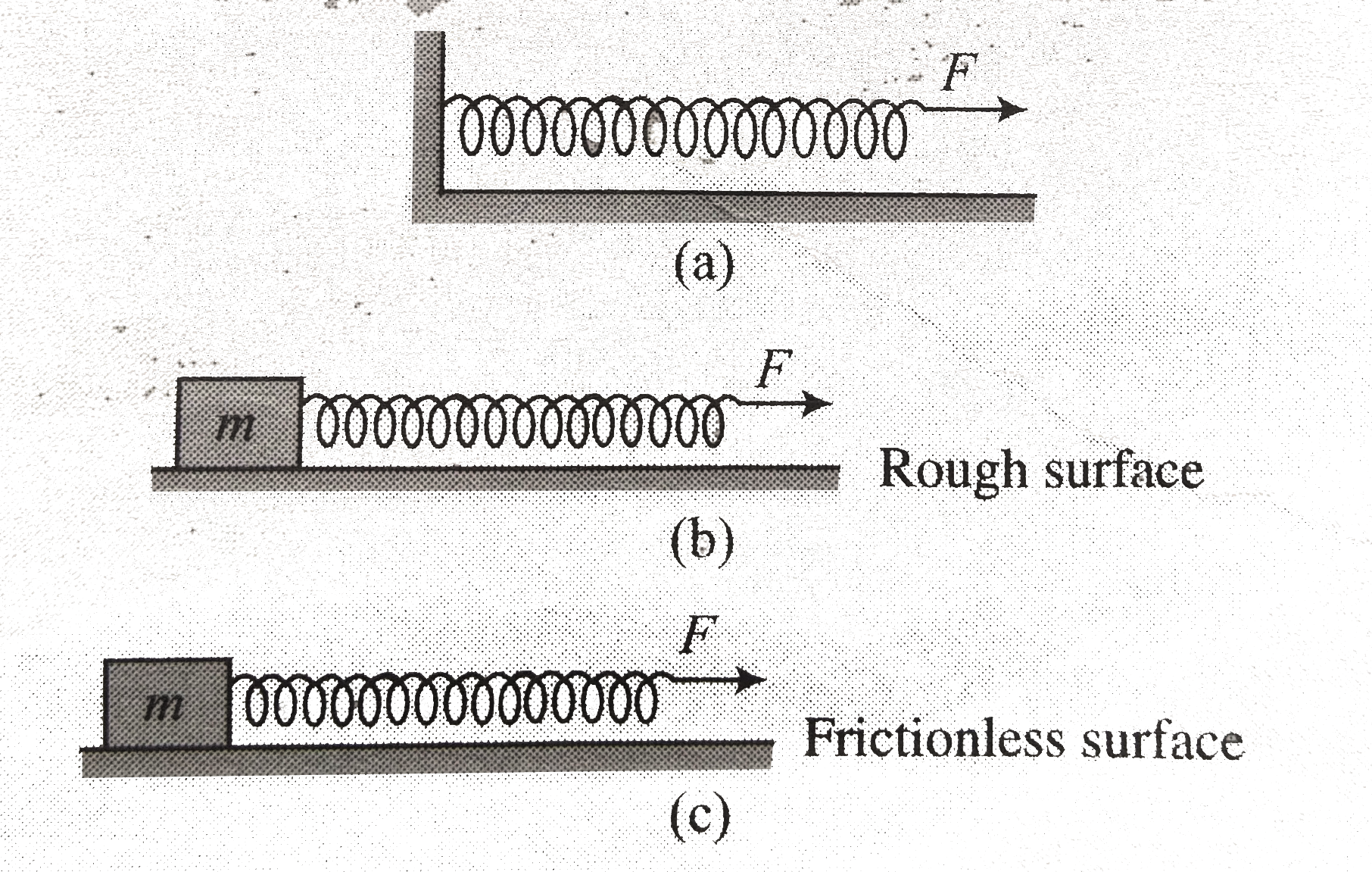 02:19View Solution
02:19View SolutionA smooth block of mass m is connected with a spring of stiffness `k(=20Nm^(-1)` )and natural length `l_(0)=0.25 m`. If the block is pulled such that the new length of the spring becomes `l=0.3m`, find the acceleration of the block at the moment when it is released from given positon.
 03:49View Solution
03:49View SolutionA sand bag of mass m is hanging from a light spring of stiffness k. Find the elongation of the spring. If we pull the sand bag down by an additional distance x and release it, find its acceleration and maximum velocity of block.
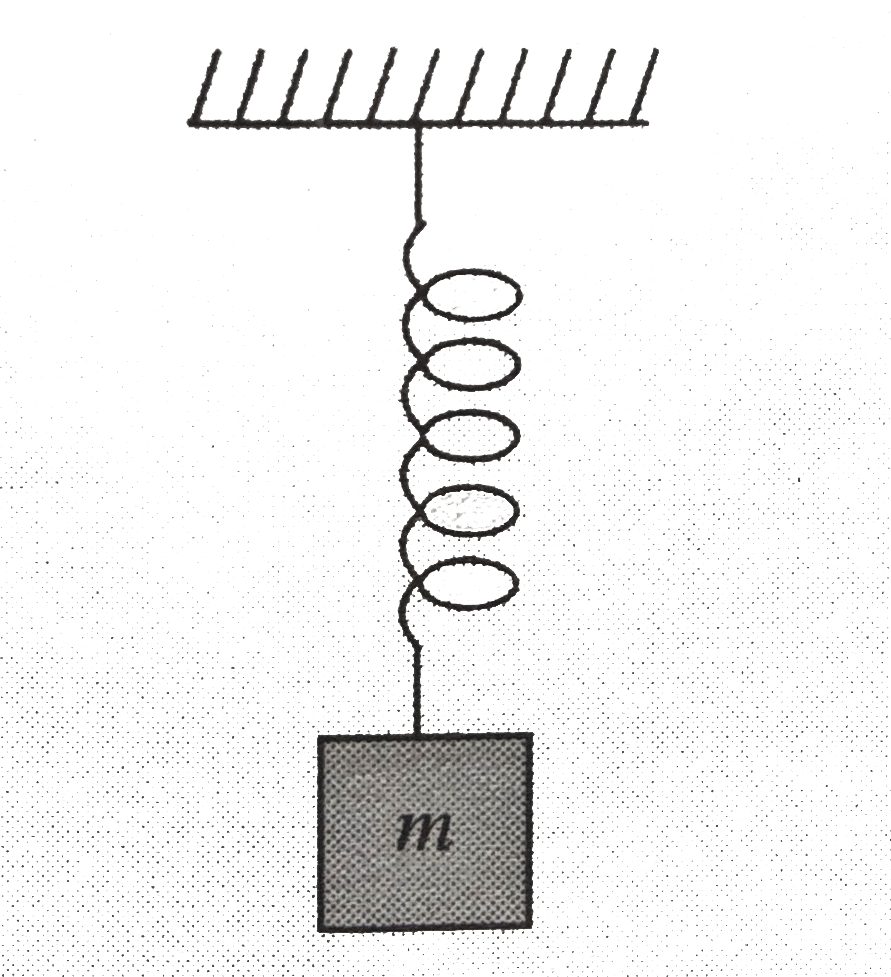 07:45View Solution
07:45View SolutionTwo blocks are connected by a spring. The combination is suspended, at rest, from a string attached to the ceiling, as shown in fig. The string breaks suddenly.
Immediately after the string breaks, what is the initial downward acceleration of the upper block of mass 2m?
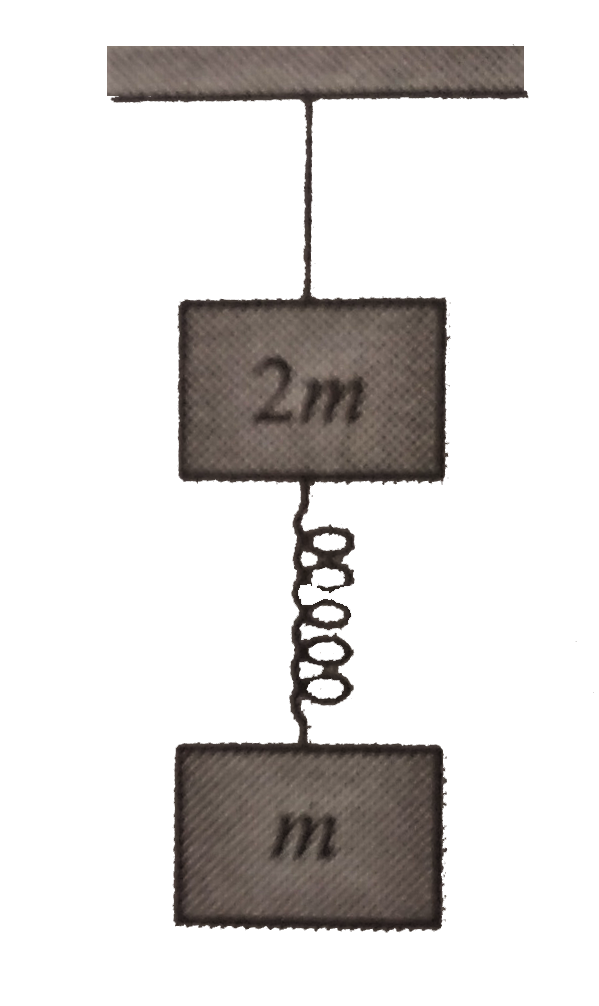 03:00View Solution
03:00View SolutionA block of mass 20 kg is suspended through two light spring balances as shown in fig. Calculate the:
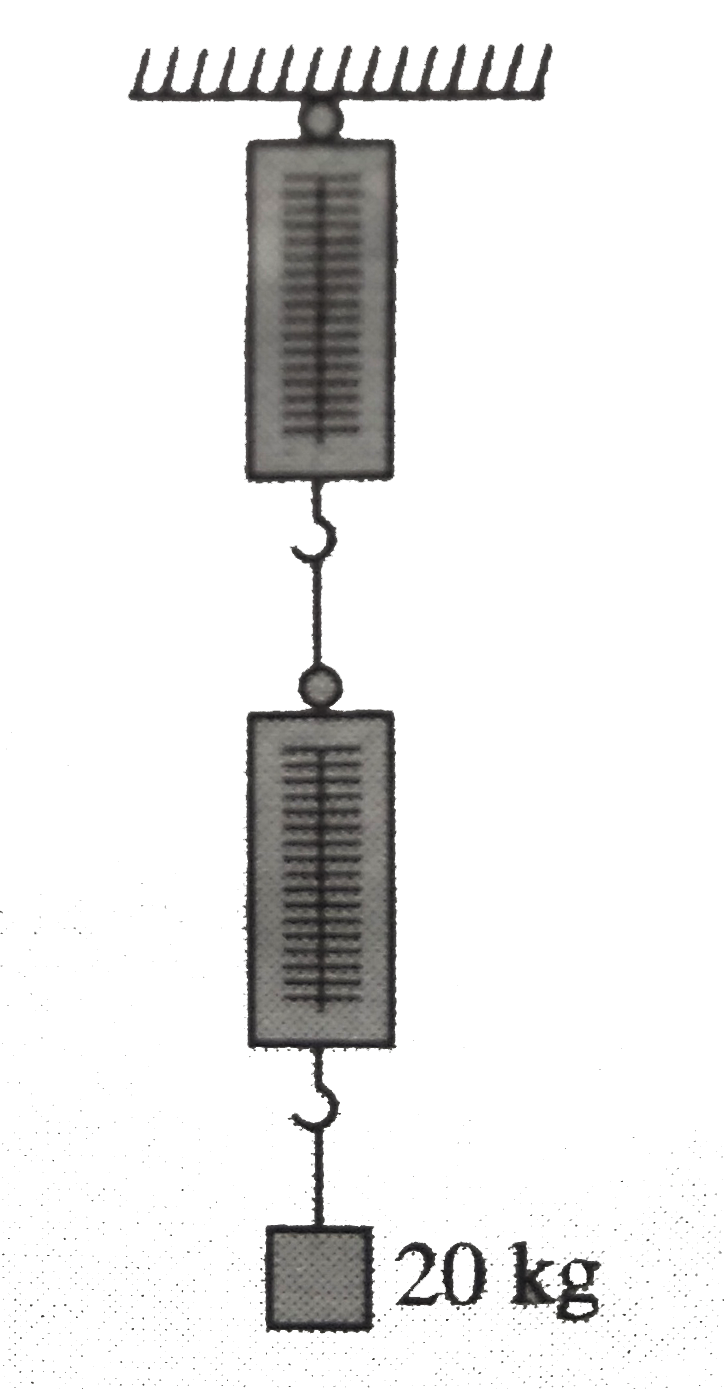
(a) reading of spring balance (1),
(b) reading of spring balance (2).00:44View SolutionTwo block are connected by a spring of natural length 2m. The force constant of spring is `200Nm^(-1)`.
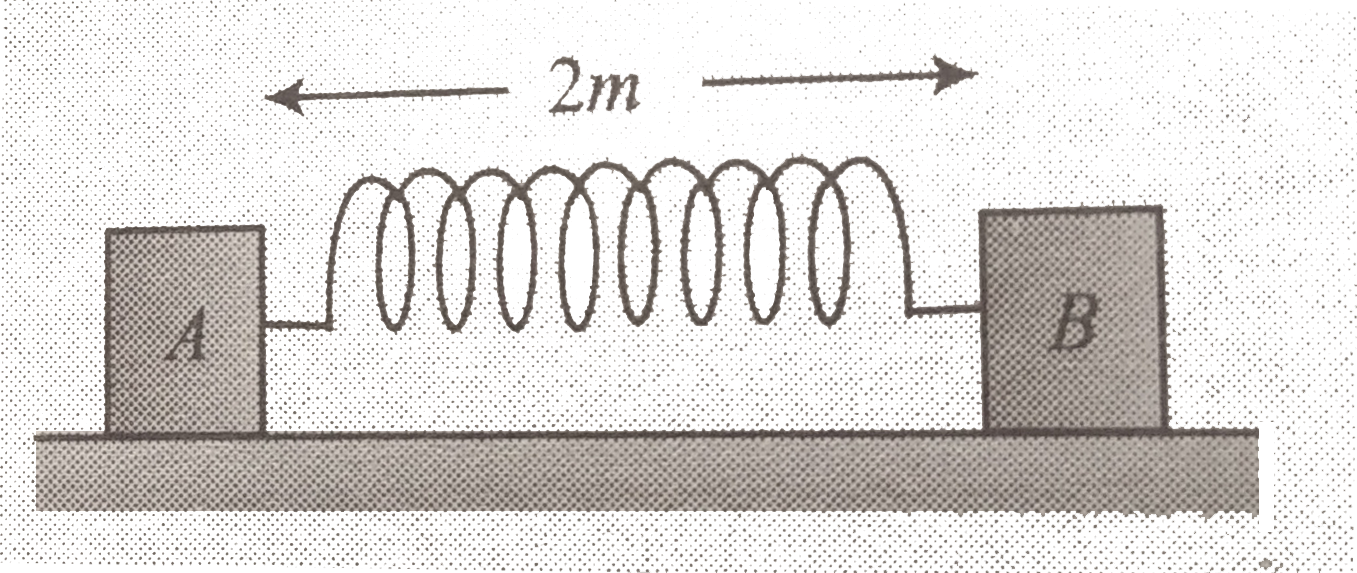
Find the spring force in the following situations:
(a) A is kept at rest and B is displaced by 1m in right direction.
(b) B is kept at rest and A is displaced by 1m in left direction.
(c ) A is displaced by `0.75 m` in right direction and B is `0.25 m` in left direction.03:05View SolutionIf the force constant of spring is `50Nm^(-1)`, find mass of the block, if it an rests in the given situation `(g=10ms^(-2)`).
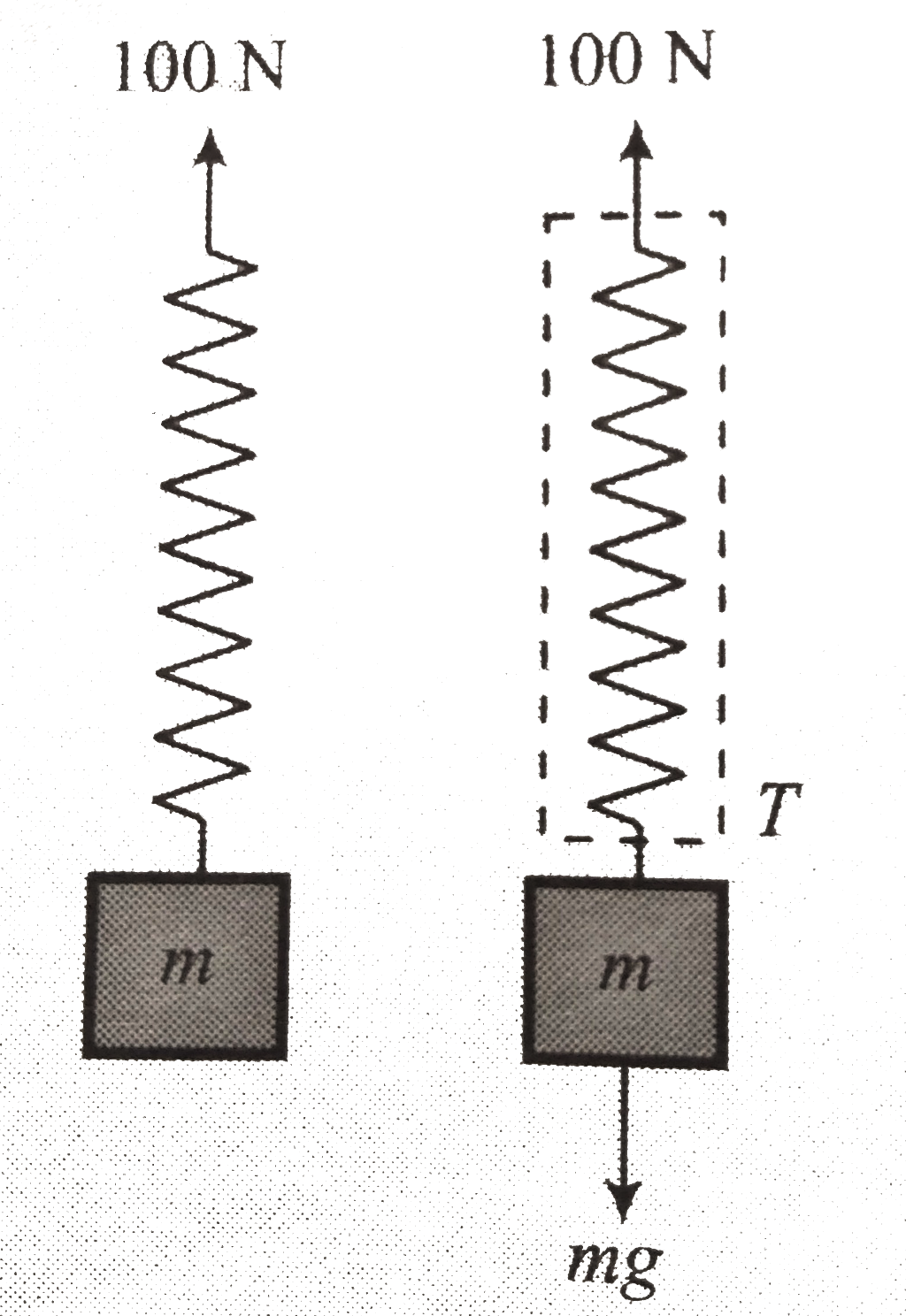 00:53View Solution
00:53View SolutionTwo blocks are connected by a spring. The combination is suspended, at rest, from a string attached to the ceiling, as shown in fig. The string breaks suddenly.
Immediately after the string breaks, what is the initial downward acceleration of the upper block of mass 2m?
 03:00View Solution
03:00View SolutionFind the acceleration of `3kg` mass when acceleration of 2kg mass is `ms^(-2)` as shwon in fig.
 02:52View Solution
02:52View SolutionFind the reading of spring balance as shown in fig. Assume that mass M in equilibrium. (All surfaces are smooth).
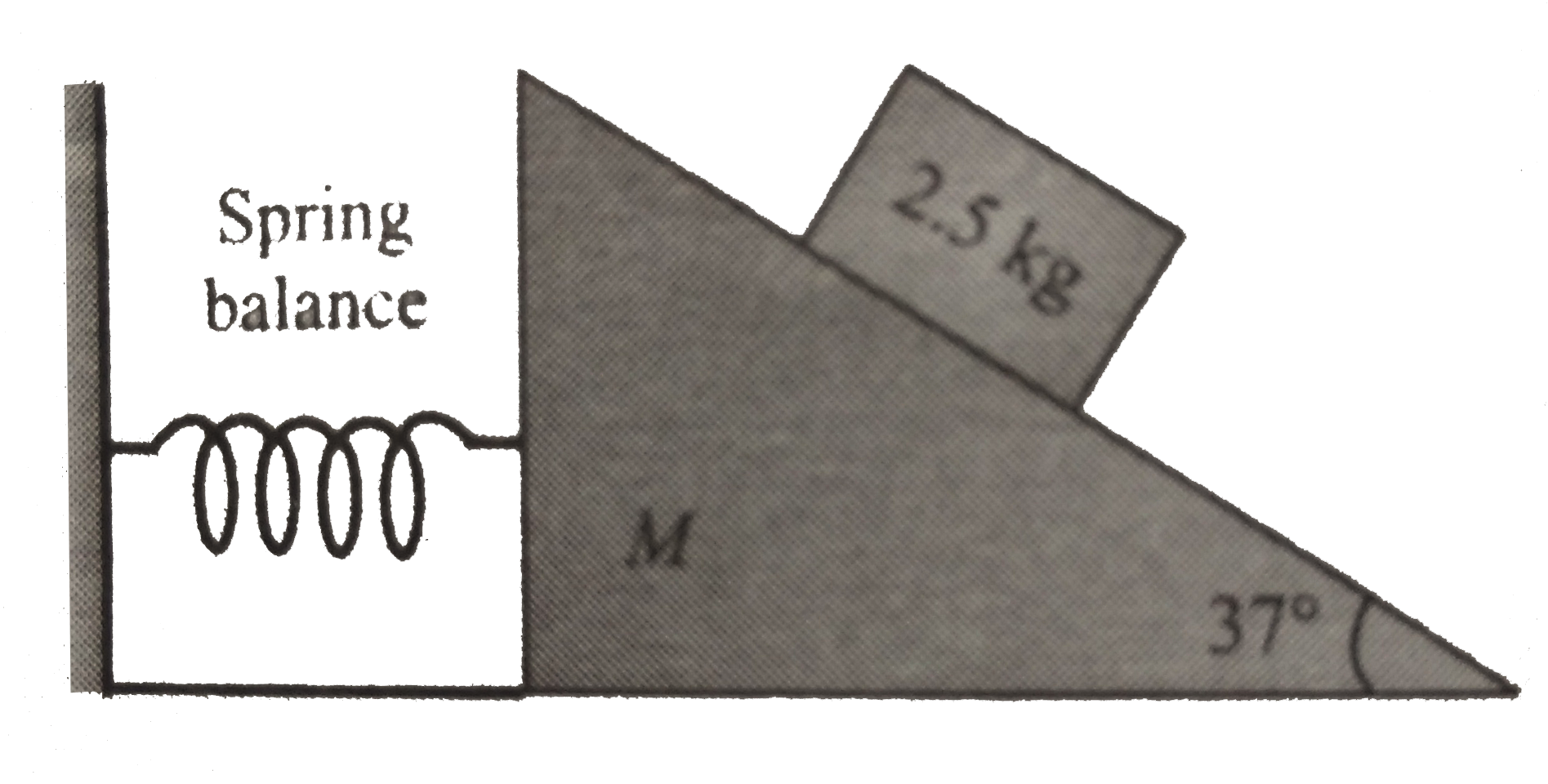 04:58View Solution
04:58View SolutionTwo block of masses `m_(1)` and `m_(2)` are in equilibrium. The block `m_(2)` hangs from a fixed smooth pulley by an inextensible string that is fitted with a light spring of stiffness k as shown in fig. Neglecting friction and mass of the string, find the acceleration of the bodies just after the string S is cut.
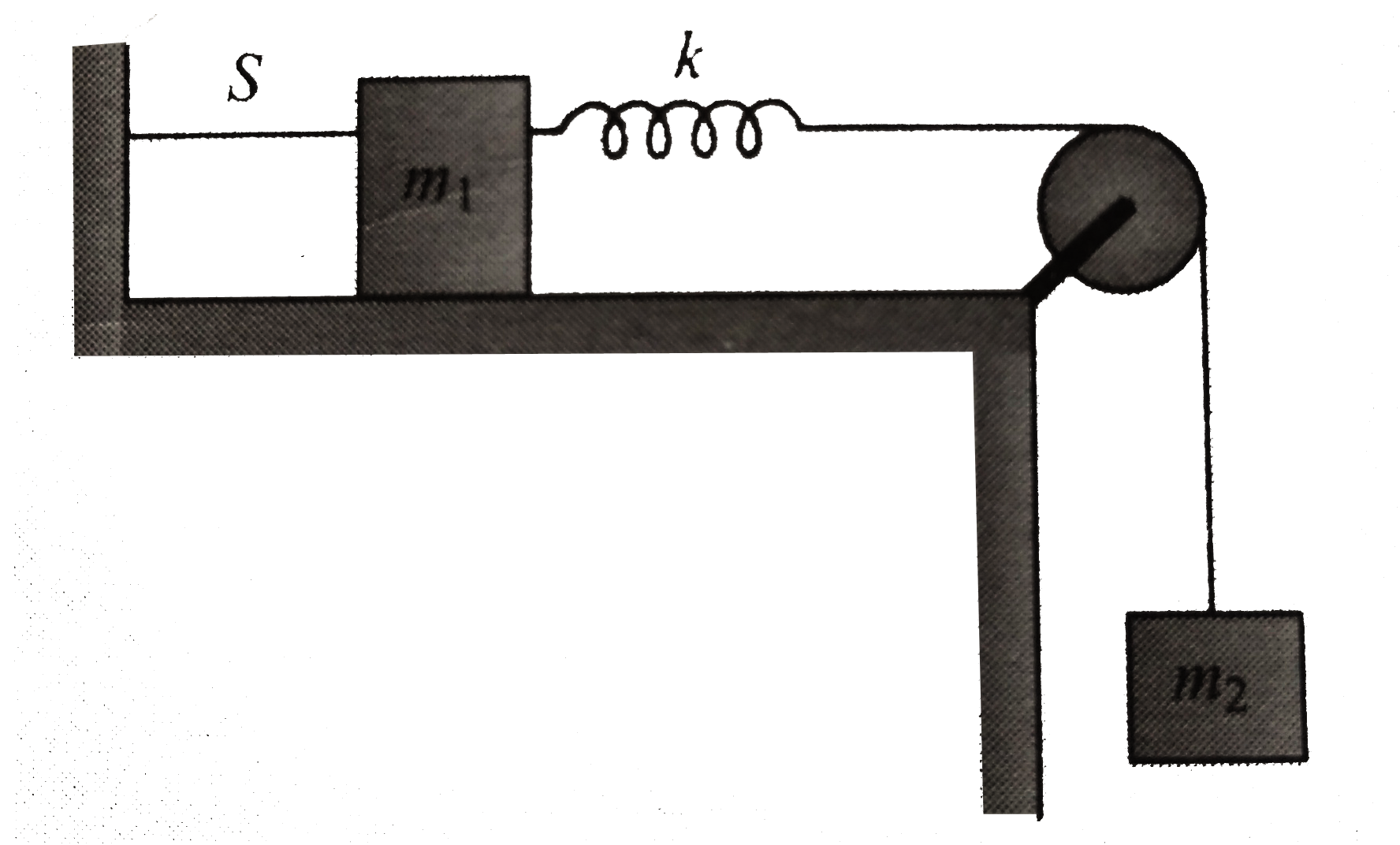 09:16View Solution
09:16View Solution
Exercise 6.4 questions and complete solutions for chapter NEWTON'S LAWS OF MOTION 1 of CENGAGE PHYSICS (ENGLISH) of Class 11
